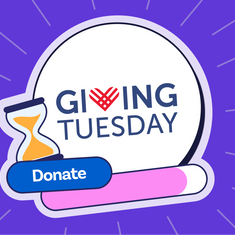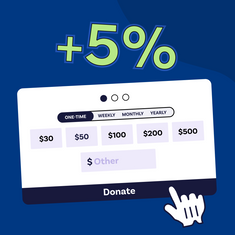
Nonprofits need organisation when it comes to yearly planning. Here’s how to map out your efforts with a fundraising calendar.
Special events and creative campaigns may be the most visible (and fun!) aspect of nonprofit fundraising, but there’s a lot more that goes on behind the scenes.
Once you start to think about how you’ll spend your budget, when and how you’ll use resources and volunteer support, and how these decisions will affect your cycle of donor communications, your plans for the year will get complicated pretty quickly. “Winging it” is not the way to go!
Making the biggest impact with what you’ve got comes down to expert timing and strategic resource management. When you’ve got a few different projects in the works at different stages, it’s easy to get distracted and miss golden opportunities. Using an annual fundraising calendar is a great way to prioritise the most important projects and activities to focus on throughout the year.
A fundraising calendar will help you break big financial goals into smaller ones, strategise your year-round fundraising activities, and coordinate communications with your community of supporters, donors, potential donors, and other partners. You’ll need something a bit more detailed than a basic calendar app or wall calendar that you can customise to fit your organisation’s needs.
In this article, we’ll get you started with everything you’ll need to consider when creating and using your custom calendar.
1. Organise financial goals and assets
All of your fundraising efforts require a certain amount of money and time, and a fundraising calendar will help you align these resources into one strategy. In general, it’s easiest to start with the biggest elements and work down to more specific details as you go. One step at a time!
Your organisation’s annual budget and cash flow will serve as the basic foundation. Before you get started, gather any and all financial information you’ll need to break down your annual operating budget and fundraising goals by quarter.
Start with your budget and identify when some of your biggest purchases will happen. List every source of income and fundraising activity, and don’t forget guaranteed income from grants and sponsorships.
Take your annual fundraising goal and work backward to determine total goals for each quarter. Don’t worry if they don’t come out evenly — say if your annual gala is in Q2, your Q2 fundraising goal will be a bit higher than the others.
Account for Every Source of Income
Don’t overlook any of these financial resources! Every little bit counts toward your annual goal.
✅ Grants
✅ Sponsorships and donation matching
✅ Membership fees
✅ Special events
✅ Online fundraising
✅ Text message campaigns
✅ Direct mail
✅ Sale of items or services
Plan for Growth and Impact
Remember, the numbers you’re looking at represent more than dollars and cents: These funds are the energy that powers your mission and your community. So when you’re plotting what’s possible budget-wise on yoNeur fundraising calendar, ask yourself these questions:
🤔 What do you want to do with your community this year and how?
🤔 What major campaigns will raise the funds you need?
🤔 How will you balance recurring giving with community-building campaigns and events?
🤔 Where do you want to see growth?
2. Study previous years
One of the best recipes for success is to figure out what works — and do more of it!
Gather data from previous years and reporting from specific fundraising campaigns to review what worked really well for your organisation. Identify your most successful campaigns and which marketing activities had the greatest return on investment (ROI). Look at where you used resources and where you need additional support to inform this year’s fundraising strategy.
Some key figures on any fundraising calendar are metrics for new donor acquisition and donor retention. How will you attract new donors, and how will you keep them engaged?
We recently updated Raisely’s reporting suite with an easy-to-use visual report builder that can filter down to the exact information you need and a scheduler to capture snapshots of your progress exactly when you need them. Explore everything that’s possible in this reporting tutorial with a nifty video.
If you don’t have a lot of data from previous years to work with, that’s okay! Try out our peer-to-peer campaign planner to get an idea of how much revenue you can expect from a single campaign and see how different “levers,” like the number of website visitors and average donation amount, will affect the outcome.
3. Build your fundraising calendar: start with key goals and dates
Are we having fun yet? Now that you have a good feel for the fundraising ideas that’ll get you to your annual goals and the resources it’ll take to carry them out, it’s time to start building your fundraising calendar.
As your detailed calendar comes together, you may want to create a traditional calendar of activities with the most important deadlines and essential high-level information to keep your staff in the loop.
List hard deadlines for annual events, key giving dates, and holidays throughout the year, then organise the financial details for each one. Take the financial information you gathered in step one and organise fundraising events and campaigns by date.
Extra-credit alert: If it helps you stay organised, colour-code your spreadsheet with different colours for financial plans, in-kind resources, volunteer hours, and marketing and communications.
Start with the biggest, most time-sensitive initiatives and then fill in your calendar with smaller fundraisers until you’ve planned enough activity to meet your quarterly goals. Add rows for each event or fundraising activity and columns for the cost, fundraising goal, and notes on staff and resources needed.
Keep in mind when you’ll need to start planning and promoting to space things out and keep the workload manageable. Check out this list of cause awareness and giving days to make sure you’re not missing anything!
4. Connect the dots: plan how you'll make it all happen
After you have the big financial pieces, key dates, and resources in place, you’ll need to fill in your fundraising calendar with the marketing, donor communications, and other projects that’ll keep everything moving.
What works for your nonprofit organisation will be different from others, so this is where the insights from your past experience will come into play. You know what they say — hindsight is 20/20!
Think about problems you’ve run into, such as an overwhelmed staff or dry periods when you didn’t have much news to share with donors. Keep in mind that volunteer hours and labour are finite resources.
Each type of fundraising campaign calls for a different donor communication strategy. Whether you’re planning peer-to-peer fundraisers, using a recurring giving model, or holding several special events throughout the year, it’s important to note how early and how often you’ll be interacting with donors.
Spreading out your communications is just as important as managing your finances wisely: If you bombard your donors with too many messages, you risk donor fatigue.
Note the beginning and end dates for all of your promotions and highlight times throughout the year when you’ll have a lot of new donors to build relationships with.
As you fill in plans for donor communications, consider how individual supporter journeys will align with annual events and campaigns. If you haven’t taken a look at Raisely’s donor management features, check them out to see what kinds of tools you have at your disposal.
Let’s Review the Planning Process
It may take a lot of time to gather and sift through all of the information you’ll need to create a comprehensive fundraising calendar for the year ahead. Don’t rush it, and remember to build in extra “wiggle room” for yourself and your team.
Start with the biggest pieces of information and most important dates, then work your way down to the activities it’ll take to meet your quarterly goals. Repeat the process below until it looks like your year will go smoothly from beginning to end.
- Lay out your budget and realistic fundraising goals for each fundraising activity.
- Determine how many volunteer hours you’ll need for each one.
- Note any other in-kind resources or equipment each activity requires.
- Note key moments in the donor communication cycle, such as outreach to major donors for sponsorships, new donor drives, social media campaigns, and donor retention campaigns.
- Repeat for each campaign and event, and when activities overlap, budget your time and resources carefully.
Start building your fundraising calendar
Creating a fundraising calendar is a complex process, but the result is one of your most valuable fundraising tools. You’ll return to your calendar all year long to keep tabs on your top priorities and make sure none of the small stuff slips through the cracks.To get started, and request a demo to get a better sense of everything you can do with Raisely.
Ready to create your
next campaign?

Kelsey Hoff is a content marketing specialist, freelance writer, blogger, and poet. She creates emotionally intelligent content that “listens first” for effective, ethical thought leadership.




